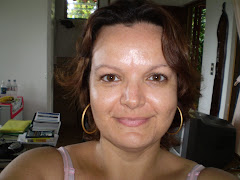That´s the title of the book we read during the week for the Foundation Course at the University for Peace (Upeace), in Costa Rica. It is a classics written by the German philosopher Hannah Arendt (1906-1975). I have always heard of this book, but finally had the chance to read a part of it. Now I understand why it became a classic: Arendt´s words are important tools to understant society, relations between people, but, specially, how state can opress people with its old and violent structure:
"Today we ought to add the latest and perhaps most formidable form of such dominion: bureaucracy or the rule of an intricate system of bureaus in which no men, neither one nor the best, neither the few nor the many, can be held responsible, and which could be properly called rule by Nobody. (If, in accord with traditional political thought, we identify tyranny as government that is not held to give account of itself, rule by Nobody is clearly the most tyrannical of all, since there is no one left who could even be asked to answer for what is being done. It is this state of affairs, making it impossible to localize responsibility and to identify the enemy, that is among the most potent causes of the current worldwide rebellious unrest, its chaotic nature, and its dangerous tendency to get out of control and to run amuck.)"
quinta-feira, 30 de agosto de 2007
Survival kit
Besides an umbrella, a newcomer in Costa Rica must pay attention to two essential accessories in his/her survival kit: a compass and a map! In Ciudad Colón, distant 35 kilometres from downtown San José, the streets have no names. If you want to get somewhere, try to memorize the names of the gym place, the supermarket, the barber shop, the ice cream place, the children´s school and the grocery store. In the beginning, it may seem a little awkward, but after a while you get used to it. It is a warm excuse to get in contact with the local people. You always have to ask someone if you are going the right way. My house, for example, can easily be found "de la estación de servicio Los Angeles, 300 metros al oeste y 50 metros al sur. Casa de duas plantas, color terracota con blanco".
That´s how the mailman can also find me to deliver letters from Brazil. Yes, the post office recognizes the address. So, instead of numbers, the addresses have faces and nice people behind them. It used to be like that in any small city in the world, remember?
That´s how the mailman can also find me to deliver letters from Brazil. Yes, the post office recognizes the address. So, instead of numbers, the addresses have faces and nice people behind them. It used to be like that in any small city in the world, remember?
Assinar:
Comentários (Atom)

